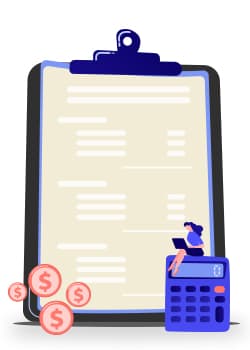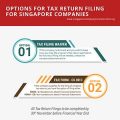In this article
Form IR8A is a mandatory submission to the Inland Revenue Authority of Singapore (IRAS) to report employee income under the Income Tax Act.
All employers operating in Singapore are required to submit Form IR8A and its related documents to IRAS by March 1 of each year.
This article will cover precisely what Form IR8A and its related forms are, to whom it needs to be submitted, and how you can submit it.
What is an IR8A Form?
An IR8A form is a document that must be submitted by all employers to IRAS each year. It must be completed for each employee of that company to inform IRAS of the employees’ income/earnings.
There are also supporting documents that may be submitted with Form IR8A, namely Form IR8A and the supporting Appendix 8A, Appendix 8B, or Form IR8S (if applicable).
What IR8A Forms Need to Be Submitted?
An IR8A form must be submitted for all employees, including:
- All full-time resident employees;
- All part-time resident employees;
- All non-resident employees;
- All resident company directors;
- All non-resident company directors;
- All board members receiving Board Member Fees or Committee Member Fees;
- All employees who are working for the business while receiving their pension;
- All employees who have left the company but are owed income from the previous year.
Exclusions are:
- Foreign employees posted overseas after clearance who did not supply employee services in Singapore for the remainder of the calendar year;
- Foreign employees based overseas and provided their employment services entirely outside Singapore for the whole calendar year;
- Foreigners who have left the company and/or country. In this scenario, Form IR21 needs to be submitted to IRAS.
What Other IR8A Supporting Forms Need to Be Submitted (Appendix 8A, Appendix 8B, Form IR8S)?
There are also related forms that may need to be submitted to IRAS, depending on the individual employee’s situation.
Appendix 8A
Appendix 8A must be submitted for any employee that was given benefits-in-kind, such as fringe benefits or other non-cash perks.
Examples might be free dental care, a gym membership, or a free car park.
If the benefits-in-kind are granted an administrative concession or exempted from income tax, they need not be included in Appendix 8A.
Appendix 8B
Appendix 8B must be completed if the employee obtained gains or profits from Employee Stock Option (ESOP) Plans or other forms of Employee Share Ownership (ESOW) Plans.
If an employee is registered with ESOP or ESOW plans, they can buy shares in the company they are employed. All gains or profits from these shares will be taxed accordingly.
Form IR8S

Form IR8S must be completed if the employer has made extra CPF contributions to the employee and/or have claimed or will claim a refund on extra CPF contributions.
How Do You Submit Form IR8A to IRAS?
You can submit Form IR8A electronically through the Auto-Inclusion Scheme (AIS) for Employment Income on the IRAS website.
Participation in AIS is compulsory for employers with 6 or more employees and is opt-in only for businesses with 5 or fewer employees.
If you have any doubts as to whether your company is registered for AIS, you can check via the IRAS Service.
Many payroll software services offer integrated IR8A submissions.
Unless otherwise stated by your payroll software provider, you will need to upload an IR8A.txt file to IRAS through your myTaxPortal to validate your IRAS.
Some payroll software providers will do this for you.
Despite needing time for set up, IRAS is a much faster and more efficient method of submission than hardcopy form.
The IR8A information should also be automatically updated on the tax portal, so you don’t need to update it each year.
If you would like to check if your payroll software already supports IR8A (and in what capacity), you can view the IRAS List of Supporting Payroll Software Vendors for the AIS.
If you choose to submit your IR8A forms manually, you can download the Offline Application.
Otherwise, you provide IR8A and its supporting forms to your employees before March 1, so they can submit them themselves.
We don’t recommend this as it places undue responsibility on your staff.
Whichever method you use to submit your Form IR8A, we advise that you give your employees copies of their own IR8A records.
Conclusion — What’s Next for Your IR8A Responsibilities?
Tax is a complicated thing, so while we’ve done our best to give you a basic overview of your IR8A responsibilities, there is always more to consider.
A business’s IR8A responsibilities are just a small part of a larger tax picture. One should always be aiming to reduce their overall tax obligations — both in terms of time and money.
If you don’t have the time or inclination to organise your IR8A and tax obligations, the better option is to hire a tax specialist who specialises in saving their clients time and preserving their profits.
SCI has an expert team of tax professionals who can help you with all of your tax needs IR8A and beyond. We believe taxes shouldn’t be a burden but rather something that should be used for your benefit.
If you have questions about finding a trustworthy partner to help with your Singapore tax responsibilities, contact us for practical advice.
FAQs
Let us help you with your Singapore income tax filing in 2023!
Talk to us today for help with your IR8A and other tax responsibilities.





